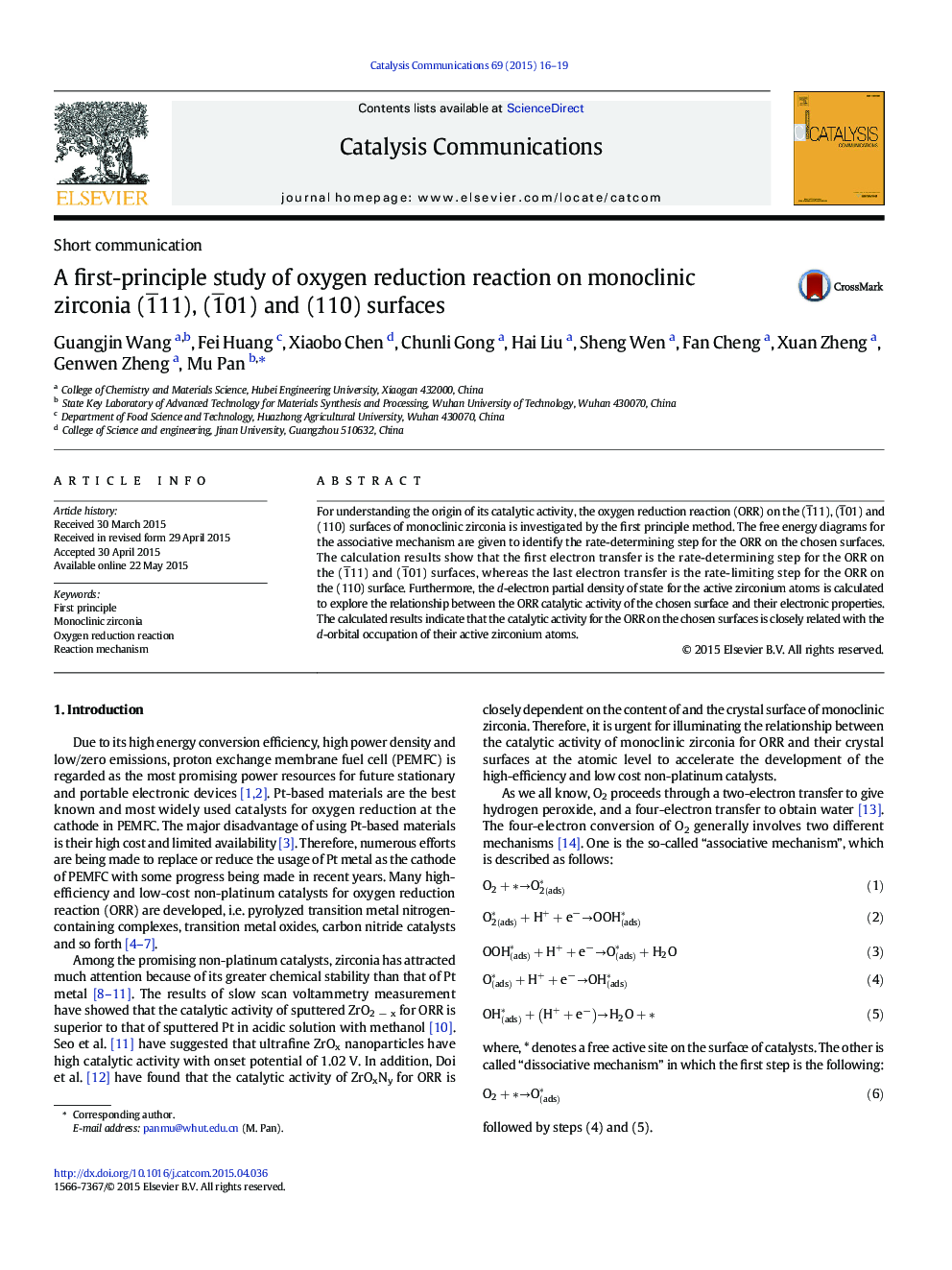| Article ID | Journal | Published Year | Pages | File Type |
|---|---|---|---|---|
| 49342 | Catalysis Communications | 2015 | 4 Pages |
•The oxygen reduction reaction on the different surfaces of monoclinic zirconia is studied by the first principle method.•The rate-limiting step of an associative mechanism is revealed.•The relationship between the catalytic activity of monoclinic zirconia and its electronic properties is established.
For understanding the origin of its catalytic activity, the oxygen reduction reaction (ORR) on the (1¯11), (1¯01) and (110) surfaces of monoclinic zirconia is investigated by the first principle method. The free energy diagrams for the associative mechanism are given to identify the rate-determining step for the ORR on the chosen surfaces. The calculation results show that the first electron transfer is the rate-determining step for the ORR on the (1¯11) and (1¯01) surfaces, whereas the last electron transfer is the rate-limiting step for the ORR on the (110) surface. Furthermore, the d-electron partial density of state for the active zirconium atoms is calculated to explore the relationship between the ORR catalytic activity of the chosen surface and their electronic properties. The calculated results indicate that the catalytic activity for the ORR on the chosen surfaces is closely related with the d-orbital occupation of their active zirconium atoms.
